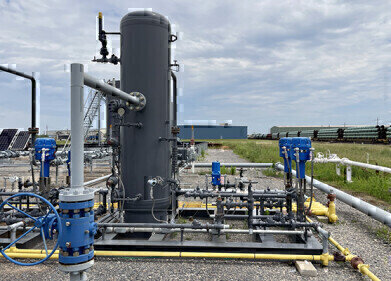Air Clean Up
A Game Changer For CCS: Boundary Dam Project Unveiling
Oct 03 2014
The long awaited moment in the history of carbon capture and storage (CCS) has arrived: today marks the formal start up of the first of its kind commercial-scale coal-fired power plant CCS operation.
SaskPower has today launched its flagship CCS project - officially unveiling a much anticipated addition to its Boundary Dam power plant in Saskatchewan, Canada. And the world - at least those interested in finding new ways to keep producing affordable and cleaner power from fossil fuels - will be watching closely.
The project has the potential to be a global game changer. Boundary Dam combines post-combustion CCS with coal-fired power generation that will reduce carbon emissions by 90%; transforming one of the world’s most abundant and affordable sources of energy to one of the cleanest.
The project will have a particularly significant impact on the province. The area boasts approximately 300 years supply of good quality coal, which currently generates around half of the province’s electricity. The transformation of the coal fired power station unit into a producer of low-carbon, base-load electricity; promises to capture 1 million tonnes of CO2 per year – the equivalent of taking more than 250,000 cars off the road.
Some of the captured CO2 will be liquefied and bought by oil companies for use in enhanced oil recovery, helping to extract otherwise unobtainable crude from the ground and providing an additional revenue stream for the plant. The project will also capture sulphur dioxide, which can be converted to sulphuric acid and used in industrial processes. An additional by product of coal combustion, fly ash, will also be captured and sold for use in concrete goods. The remaining CO2 will be stored permanently through a process that injects the gas in excess of three kilometres under the ground.
The project promises to become a model for plants around the world in demonstrating a long-term, fiscally responsible way of reducing emissions. It is hoped that these forerunner projects will help towards building much needed confidence amongst Government, the general public and critically, the financial investment community.
The project successfully builds upon previous applications and is the world’s largest operating CCS project. Boundary Dam is a vindication of the long held confidence amongst industry in the technology. Luke Warren, CEO of the Carbon Capture and Storage Association, comments:
‘The launch today goes beyond a single project. SaskPower has made significant progress in making a valuable contribution to demonstrating a viable technical, environmental and economic case for the application of CCS to power plants. It is hoped that Boundary Dam will form part of a much needed commercial proof point that the economics make sense’.
A recently released CCSA and TUC report, ‘The economic benefits of carbon capture and storage in the UK’ estimates that CCS could create a global market worth over £100 billion. The UK – with the North Sea providing a vast and untapped store of around 70 billion tonnes of CO2 and optimally located for the major emission intensive clusters of Europe – has a distinct competitive advantage when it comes to gaining a slice of this potentially lucrative market.
Luke Warren continues: ‘From a UK perspective, we need examples of successful CCS more than ever. Boundary Dam highlights the need for Government to maintain momentum in delivering the CCS Commercialisation Programme and ensuring that a second phase of CCS projects are developed in parallel with the current competition projects. What is now urgently needed is a steady roll-out of projects to ensure that CCS becomes cost-competitive with other low-carbon technologies in the 2020s. The UK is world-leading in developing an enduring policy framework to support CCS alongside renewable and nuclear under the Electricity Market Reform programme but it is vital that the policy delivers real projects as soon as possible’.
Boundary Dam shows us that CCS is ready to begin to be deployed now – and that there are clear benefits to the UK in pushing ahead with it. CCSA and the TUC estimate that the UK will need tens of power stations fitted with CCS by 2030 (not to mention additional industrial CCS facilities). Others around the world are already forging ahead – globally there are 22 large scale projects operating or under construction. Decisions taken now will determine whether the UK is able to benefit from this technology or whether we close the door on CCS as an option. With decisive action, these projects could deliver real benefits in a matter of years and form the foundations of a thriving UK CCS industry.
Events
Apr 22 2024 Hannover, Germany
Apr 23 2024 Kuala Lumpur, Malaysia
Apr 24 2024 Sao Paulo, Brasil
May 05 2024 Seville, Spain
May 13 2024 Munich, Germany














